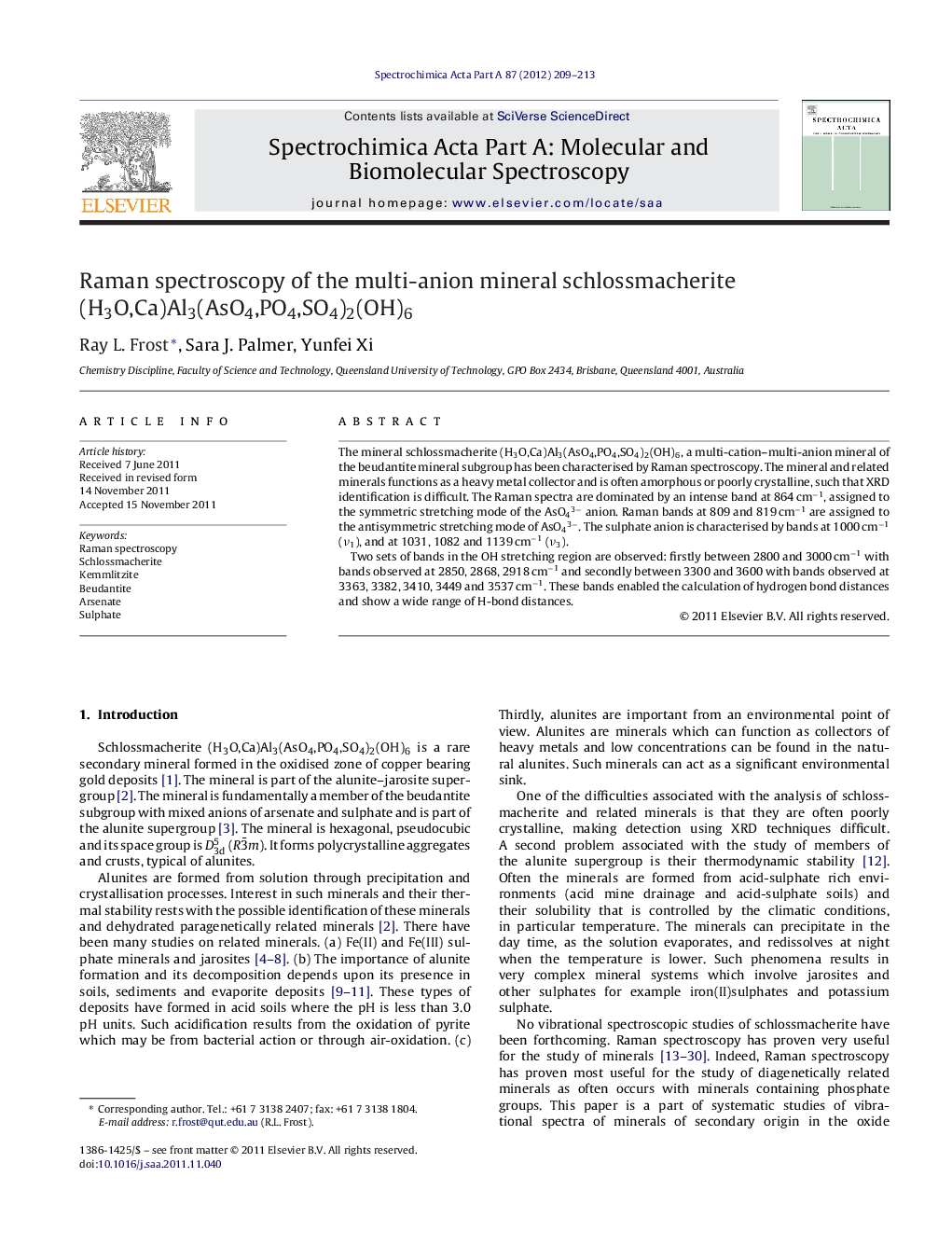| Article ID | Journal | Published Year | Pages | File Type |
|---|---|---|---|---|
| 1235835 | Spectrochimica Acta Part A: Molecular and Biomolecular Spectroscopy | 2012 | 5 Pages |
The mineral schlossmacherite (H3O,Ca)Al3(AsO4,PO4,SO4)2(OH)6, a multi-cation–multi-anion mineral of the beudantite mineral subgroup has been characterised by Raman spectroscopy. The mineral and related minerals functions as a heavy metal collector and is often amorphous or poorly crystalline, such that XRD identification is difficult. The Raman spectra are dominated by an intense band at 864 cm−1, assigned to the symmetric stretching mode of the AsO43− anion. Raman bands at 809 and 819 cm−1 are assigned to the antisymmetric stretching mode of AsO43−. The sulphate anion is characterised by bands at 1000 cm−1 (ν1), and at 1031, 1082 and 1139 cm−1 (ν3).Two sets of bands in the OH stretching region are observed: firstly between 2800 and 3000 cm−1 with bands observed at 2850, 2868, 2918 cm−1 and secondly between 3300 and 3600 with bands observed at 3363, 3382, 3410, 3449 and 3537 cm−1. These bands enabled the calculation of hydrogen bond distances and show a wide range of H-bond distances.
Graphical abstractFigure optionsDownload full-size imageDownload as PowerPoint slideHighlights► The mineral schlossmacherite (H3O,Ca)Al3(AsO4,PO4,SO4)2(OH)6 and related minerals function as heavy metal collectors. ► The mineral is amorphous or poorly crystalline› identification using XRD is difficult. ► Raman spectra are dominated by bands attributable to AsO43− and SO42− anions.
